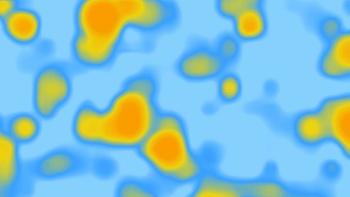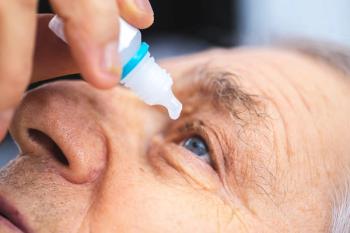
Implementing advanced concepts in the management of uveitis
Whether you are practicing in a referral-based clinic, primary-care office, or commercial setting, we will all encounter patients with uveitis. There are a wealth of articles, studies, and lectures on how to diagnose, treat, and manage uveitis. Instead of reiterating the typical discussion of uveitis, we present a few not-so-common pointers that will greatly enhance your ability to manage this disorder.
More from this issue:
Use an in-office pledget
Posterior synechiae can put patients at risk for intraocular hypertension and glaucoma, so it’s best to be aggressive and break synechiae as soon as they form. If not treated quickly and appropriately, a firm scar between the iris and lens will form, making it very difficult to break. In order to prevent posterior synechiae, cycloplegic agents are prescribed to keep the pupil dilated. However, in cases where patients present with an already densely formed synechia, it can be much more challenging to break just by prescribing cycloplegics.
By utilizing a pledget, a small wad of cotton, we can administer a large, sustained dose of dilating agents to break the synechia.
The procedure is as follows:
• Break off a small amount of cotton from cotton swab and firmly roll it around your fingers to make a dense circle
• Instill an equal amount of 1% atropine, 2% cyclopentolate, and 10% phenylephrine into a bottle cap and shake around to mix (check the patient’s blood pressure due to the higher concentration of phenylephrine being used)
• Put the cotton into the bottle cap to absorb the mixture
• Instill proparacaine into the eye and insert the pledget into the lower lateral cul-de-sac with forceps
• Leave the pledget in place for approximately 30 minutes, checking on the patient periodically
After the pledget is removed, re-evaluate the pupil and synechia. Upon discharge, patients are prescribed the appropriate anti-inflammatory agents as well as a cycloplegic agent. If there is still a significant amount of posterior synechia remaining, the patient should return in one or two days to administer another pledget.
Choosing a steroid drop
The two most commonly used topical anti-inflammatory agents optometrists and ophthalmologists use in treating uveitis are prednisolone acetate 1% and difluprednate 0.05% emulsion.
A head-to-head study comparing both drops showed that difluprednate QID was non-inferior to prednisolone acetate eight times per day in treating mild to moderate anterior uveitis.1 The drops were prescribed at their respective doses for 14 days, then tapered over an additional 14 days, and patients were observed for 14 days. The mean intraocular pressure (IOP) values in both groups remained less than 21 mm Hg throughout the study.1
Another study also showed that difluprednate 0.05% QID was non-inferior to prednisolone acetate 1% eight times per day for treating anterior uveitis, while 12.5 percent of patients on prednisolone acetate had to be exited from the study due to a lack of response to the drug.2 Clinically significant increases in IOP occurred in six percent of difluprednate patients and five percent of prednisolone patients.2
Lastly, a study compared dose uniformity among difluprednate 0.05% emulsion and brand and generic prednisolone acetate 1%.3 Difluprednate showed superior dose uniformity to both brand and generic prednisolone, and generic prednisolone showed the worst dose uniformity.4
The take-home message of theses comparative studies is that difluprednate has greater potency, efficacy, and dose uniformity than prednisolone acetate, while the incidence of increased IOP is similar between both medicines.
For the majority of our patients who we treat for uveitis, difluprednate is our preferred topical steroid. We find it to be significantly more effective as well as noting better patient compliance because of less frequent dosing and no need for shaking. Additionally, we have noted in increase in the cost of generic prednisolone over the past year. Considerations for using prednisolone over diflupredate are in patients who are known steroid responders and children because they have a tendency to be more sensitive steroid responders than adults.4
Include laboratory studies
Part of the optometrist’s job in managing uveitis is to help determine if there is an underlying systemic etiology. Internal medicine, rheumatology, gastroenterology, and infectious disease referrals are ordered depending on patient symptoms and clinical findings. Most underlying conditions are not diagnosed from laboratory studies alone; however, initial serologic testing ordered by the optometrist can often times narrow down or identify the cause.
Indications to ordering serologic testing include:
• Bilateral involvement
• Moderate to severe unilateral inflammation
• Granulomatous uveitis
• Recurring cases
• Posterior segment involvement
• When associated systemic symptoms are present
Some of the more common laboratory studies are: rheumatoid factor, anti-nuclear antibody, HLA-B27, Lyme ELISA/Western blot, FTA-ABS, angiotensin converting enzyme, purified protein derivative (PPD), ESR, and CRP.
Other tests to consider are:
Anti-neutrophil cytoplasmic antibodies (ANCA). Granulomatosis with polyangiitis (GAP), formerly known as Wegener’s, is a vasculitis that affects small- and medium-sized vessels. The upper and lower respiratory tracts along with renal involvement are most commonly seen; however, various types of ocular and orbital inflammation are associated.5 While uveitis is a rare manifestation of GAP, it can occur as an anterior, posterior, or pan uveitis.5 Retinitis, vasculitis, artery, and vein occlusions can also occur.5
Cytoplasmic ANCA (c-ANCA) is a subset of ANCA and most commonly targets the enzyme proteinase 3 (PR3), which is positive in approximately 80 percent of patients with GAP.5 Perinuclear ANCA (p-ANCA) is also a subset of ANCA which most commonly targets the enzyme myeloperoxidase (MPO). P-ANCA is typically not positive in patients with GAP; however, it is associated with microscopic polyangiitis, systemic lupus erythematosus, Sjögren’s syndrome, rheumatoid arthritis, inflammatory bowl disease, ulcerative colitis, and sarcoidosis.5-7 We will usually include c-ANCA and p-ANCA tests when working up our uveitis patients.
Related:
QuantiFERON TB Gold (QFT-G). Tuberculosis is typically diagnosed based on history, physical examination, chest radiography, and sputum smear. Additionally, tuberculin skin testing such as the Mantoux test, or PPD, is performed in which tuberculin protein is injected intradermally. About 48 to 72 hours later, the injection site is observed and measured for induration.
QFT-G is an alternative to skin testing in which a blood sample is obtained and determines if there is an immune response to tuberculosis bacteria. Results are typically available quicker than with PPD testing, and only one patient visit is required. Additionally, QFT-G testing has improved sensitivity and is not affected by prior tuberculosis immunization.8
Herpes simplex antibodies. Uveitis caused by the herpes simplex virus (HSV) can often be difficult to diagnose. Characteristics of herpetic uveitis include elevated intraocular pressure and stellate keratic precipitates; however, the course of HSV uveitis can be variable and difficult to diagnose. Often optometrists will diagnose “probable herpetic uveitis.” HSV IgG and IgM antibodies can be tested in suspected cases of HSV uveitis, especially with monocular inflammation. While negative serology doesn’t exclude HSV as the cause, positive serologic testing can aid in the probability of HSV.
Conclusion
Uveitis is a vastly broad and complicated topic. Although this article does not discuss the basics of diagnosis, treatment and management, it is intended to add to the optometrist’s arsenal of knowledge within this topic. Implementing these various tools will allow for better management and help improve patient outcomes.
References
1. Sheppard JD, Toyos MM, Kempen JH, Kaur P, Foster CS. Difluprednate 0.05% versus prednisolone acetate 1% for endogenous anterior uveitis: a phase III, multicenter, randomized study. Invest Ophthalmol Vis Sci. 2014 May 6;55(5):2993-3002.
2. Foster CS, Davanzo R, Flynn TE, McLeod K, Vogel R, Crockett RS. Durezol (Difluprednate Ophthalmic Emulsion 0.05%) compared with Pred Forte 1% ophthalmic suspension in the treatment of endogenous anterior uveitis. J Ocul Pharmacol Ther. 2010 Oct;26(5):475-83.
3. Stringer W, Bryan R. Dose uniformity of topical corticosteroid preparations: difluprednate ophthalmic emulsion 0.05% versus branded and generic prednisolone acetate ophthalmic suspension 1%. Clin Ophthalmol. 2010 Oct 5;4:1119-24.
4. Kwok AK et al. Ocular-hypertensive response to topical steroids in children. Ophthalmology. 1997 Dec;104(12):2112-6.
5. Tarabishy AB, Schulte M, Papaliodis GN, Hoffman GS. Wegener’s granulomatosis: clinical manifestations, differential diagnosis, and management of ocular and systemic disease. Surv Ophthalmol. 2010 Sep-Oct;55(5):429-44.
6. Schönermarck U, Lamprecht P, Csernok E, Gross WL. Prevalence and spectrum of rheumatic diseases associated with proteinase 3âantineutrophil cytoplasmic antibodies (ANCA) and myeloperoxidaseâANCA. Rheumatology (Oxford). 2001 Feb;40(2):178-84.
7. Ellerbroek PM, Oudkerk Pool M, Ridwan BU, Dolman KM, von Blomberg BM, von dem Borne AE, Meuwissen SG, Goldschmeding R. Neutrophil cytoplasmic antibodies (p-ANCA) in ulcerative colitis. J Clin Pathol. 1994 Mar; 47(3): 257–262.
8. Diel R, Loddenkemper R, Nienhaus A. Evidence-based comparison of commercial interferon-gamma release assays for detecting active TB: a metaanalysis. Chest. 2010 Apr;137(4):952-68.
Newsletter
Want more insights like this? Subscribe to Optometry Times and get clinical pearls and practice tips delivered straight to your inbox.








































